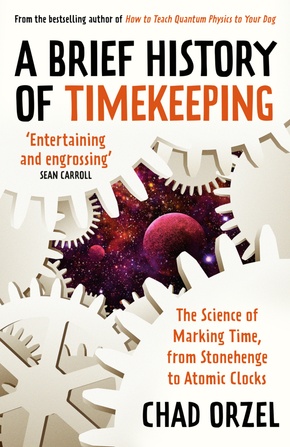A Brief History of Timekeeping - The Science of Marking Time, from Stonehenge to Atomic Clocks
| Verlag | Oneworld Publications |
| Auflage | 2022 |
| Seiten | 336 |
| Format | 12,9 x 19,8 x 2,4 cm |
| Gewicht | 293 g |
| Artikeltyp | Englisches Buch |
| EAN | 9780861542154 |
| Bestell-Nr | 86154215EA |
From Stonehenge to atomic clocks, this is how we've used science to work out the time across the centuries
'Entertaining and engrossing' Sean Carroll
Press the snooze button on your alarm once too often and you soon remember the importance of good timekeeping. That need to tell the time connects you to over five thousand years of human history, from the first solstice markers at Newgrange to quartz crystal oscillating in your watch today. Science underpins time: measuring the movement of Sun, Earth and Moon, and unlocking the mysteries of quantum mechanics and relativity theory - the key to ultra-precise atomic clocks.
Yet time is also socially decided: the Gregorian calendar we use today came out of fraught politics, while the ancient Maya used sophisticated astronomical observations to produce a calendar system unlike any other. In his quirky and accessible style, Chad Orzel reveals the wondrous physics that makes time something we can set, measure and know.
Rezension:
'Each day in 2019, Chad Orzel informs us, is nearly two milliseconds longer than days were in 1870. And they feel even longer. This entertaining and engrossing book takes us through our long struggle to measure time with precision. Filled with amazing devices, it's ultimately a story of the triumph of human ingenuity.'
Sean Carroll, author of Something Deeply Hidden

